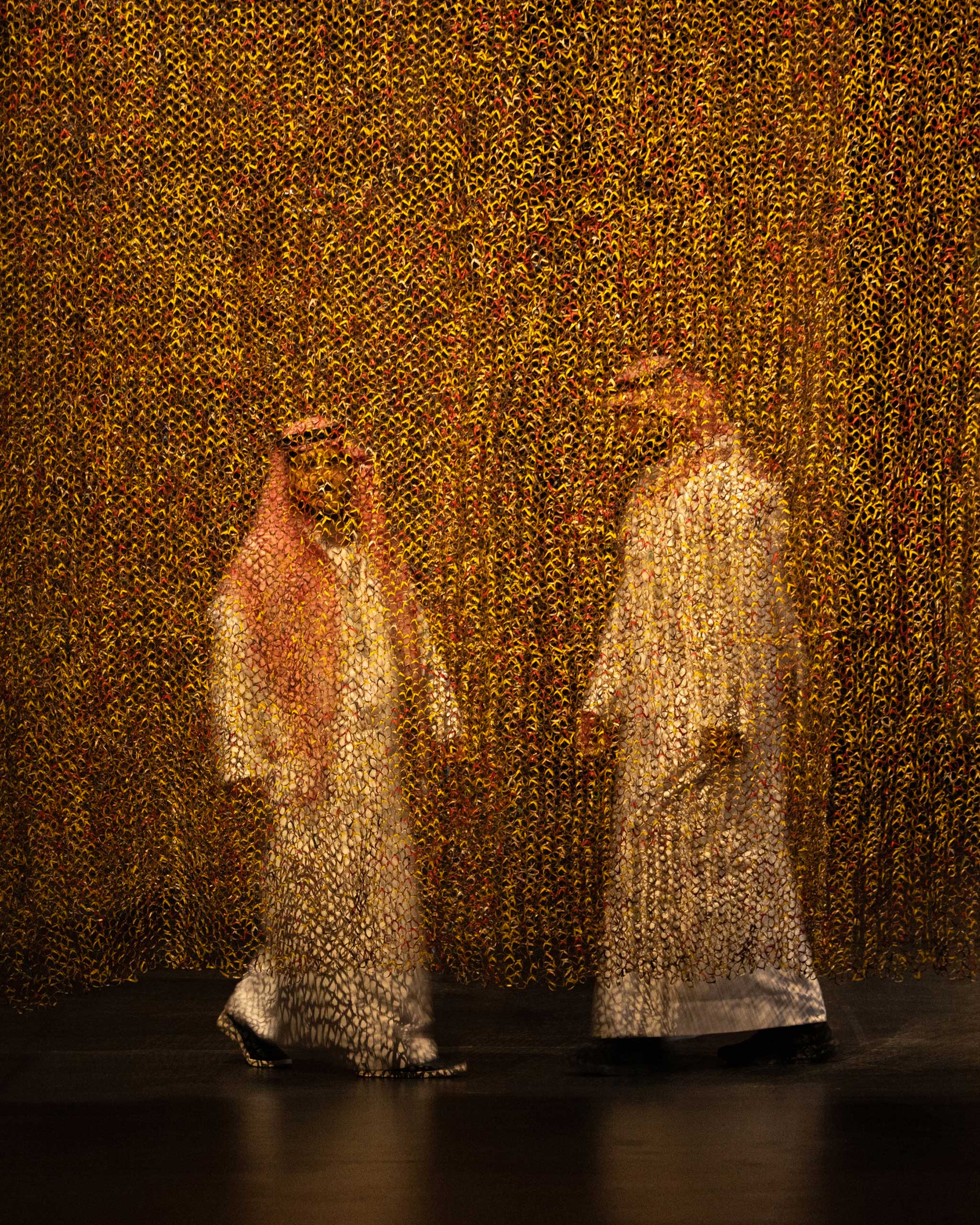“Logoligi Logarithm” by El Anatsui. Courtesy of the Diriyah Biennale Foundation
Unprecedented resources are being poured into the arts and culture industries of Saudi Arabia. How far will the Kingdom’s transformation go?
There’s a subtle scent that follows visitors as they traverse the vast warehouses-turned-galleries of the Diriyah Contemporary Art Biennale in Riyadh. It’s an earthy, musty, slightly smoky, hint-of-spicy fragrance that is at once familiar yet alluringly foreign. I find out that it is a commissioned work from olfactory scientist-artist Sissel Tolaas, who replicated petrichor, the smell of the earth after it rains, and wafted it through diffusers stationed around the exhibition halls. Petrichor in a dry desert land is distinct from that in a humid tropical climate, and it is an odor that will forever be linked in my memory with experiencing Saudi Arabia through its emergent art scene.
Saudi Arabia is weaning itself off oil, the premise that underpins all of the rapid changes occurring in the Kingdom and guided by Vision 2030, Crown Prince Mohammed Bin Salman’s grand roadmap of national transformation. Over the past several years, the ultra-conservative Islamic country has loosened some of its restrictions: defanging the notorious, stick-wielding morality police, granting women their right to drive, to travel abroad without the permission of a male guardian, and the freedom to mingle with men at sports events and concerts. Since 2019, the tourism industry has also started welcoming foreign visitors traveling for non-religious reasons.
This effort of opening up to the world and rebranding itself as a modern nation goes hand in hand with Saudi Arabia’s ambitions of building a new economy independent from oil—the creative economy. Billions of dollars are being poured into art, culture, and tourism projects that will provide jobs for Saudi youth, who make up the majority of the population. Under the auspices of the Ministry of Culture which was established in 2018, the first Diriyah Biennale was launched in December 2021 in the JAX District, a former industrial area repurposed into a creative hub of exhibition spaces, artist studios, and galleries.
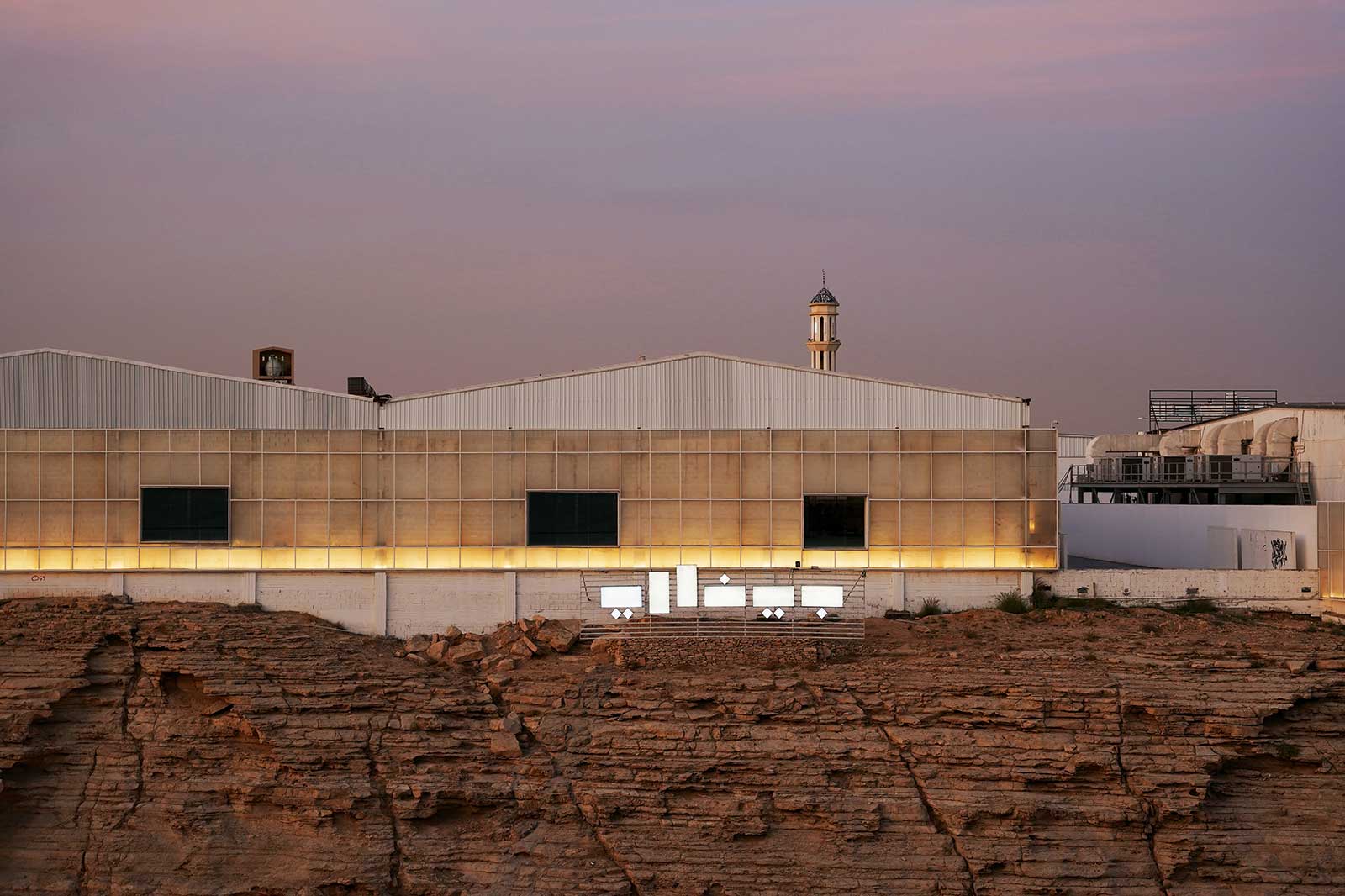
Due to worldwide covid restrictions, the inaugural Diriyah Biennale saw limited attendance, but it nonetheless signaled a new chapter for the Kingdom’s art scene. “In the air was a steadfast belief that times had changed for the conservative Kingdom and that the future held much promise,” describes the book Art in Saudi Arabia: A New Creative Economy? written by Rebecca Anne Proctor with Alia Al-Senussi. The second edition of the Diriyah Biennale which opened in February this year and will run until May 24, 2024, seems to be making good on this promise.
The title After Rain “speaks to a sense of revitalization and renewal,” writes artistic director Ute Meta Bauer in her curatorial notes. “From a wider perspective, it also frames discussions about how artists are responding to the world we inhabit.” The works of the 100 participating artists from 43 countries are grounded on the relationships between land, water, and life. Spread out across six exhibition halls and outdoor courtyards beyond which lies the Wadi Hanifah, a seasonal riverbed that runs through Diriyah, itself a historic city being reborn as a cultural destination and branded the “City of Earth,” the work directly engages with the topography, its rich history, and its fantasies of the future.
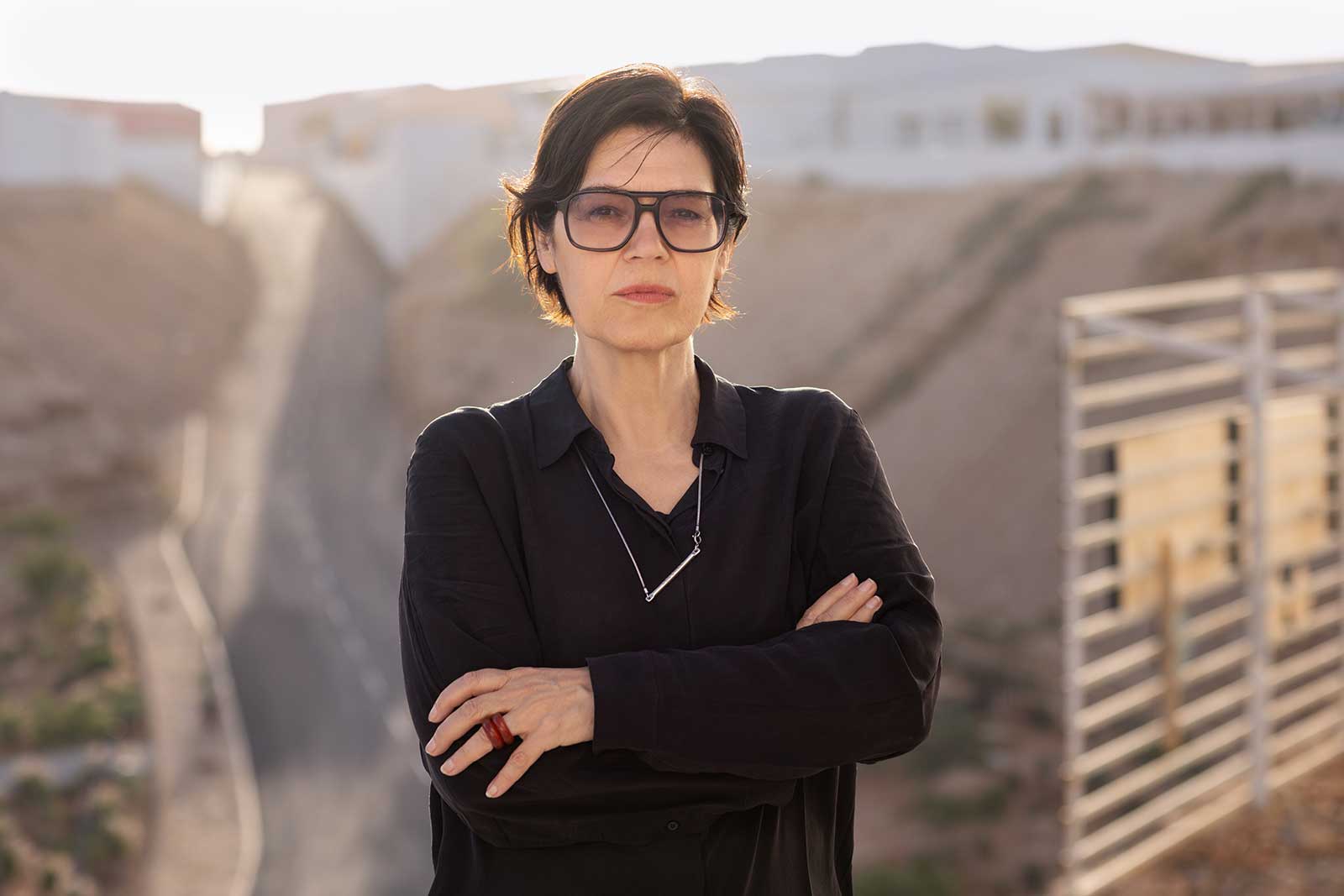
As a first-time visitor to both the Kingdom and to an international biennale, I was curious about censorship. A black box cinema built inside the first exhibition hall centered on “Stories and Histories,” screens 10 experimental films, quite revolutionary if you think about how cinema was banned in Saudi Arabia for 35 years. In the first movie to be screened publicly—Black Panther—a kissing scene was deleted. Saudis can watch movies at home, but the experience of sitting together in a dark theater has not existed for non-commercial films. Bauer, who lives in Singapore as the founding director of NTU Centre for Contemporary Art and knows a thing or two about tightly controlled media, says that the ministry gave her its trust. “They’re also young, and they’re endorsing this breath of fresh air,” she tells Vogue Philippines. “We try to open doors, but we know the lines. If we go too far, the door closes and nothing is gained.”
Critics have called Saudi Arabia’s massive cultural initiatives as “propagandistic” and “artwashing,” given that the Kingdom has not answered for its history of human rights abuses. Those working in the cultural sector are not denying any wrongdoing and acknowledge the contradictions of an authoritarian power using art for progress, but they also believe that we shouldn’t lose sight of the artists who are now given a creative platform they never had before.

Art has the capacity to “show the everyday and human side of a society that has often been viewed through a reductionist lens of political and religious rhetoric,” Proctor and Al-Senussi write, suggesting that it would be more productive to engage with Saudi art and culture than to boycott it. These changes are perhaps not just driven by a desire to appease the West, but by the real need to usher in a new society built on a sustainable economy, one that is bringing much longed-for hope to the next generation of Saudis.
Al-Senussi, a cultural strategist and senior advisor to the Ministry of Culture, rejects the double standards with which the Western world responds to Arabs. “Arabs as people have the same aspirations that all of humanity does: to live a better life, to advance, and to evolve,” she tells Vogue Philippines. “I believe in the adage that a rising tide lifts all boats and that Saudi’s rise as a global art world center is beneficial to the entirety of art history and the art world ecosystem right now.”
The response to After Rain supports the notion that the Kingdom’s cultural renaissance is one of positive transformation. Al-Senussi, who toured art world figures such as Hans Ulrich Obrist, Takeo Obayashi, Maja Hoffmann, Alexandra Munroe, Klaus Biesenbach around the exhibition halls, says they walked away impressed with the Biennale’s intellectually rigorous exchange between Saudi artists and those from around the world.
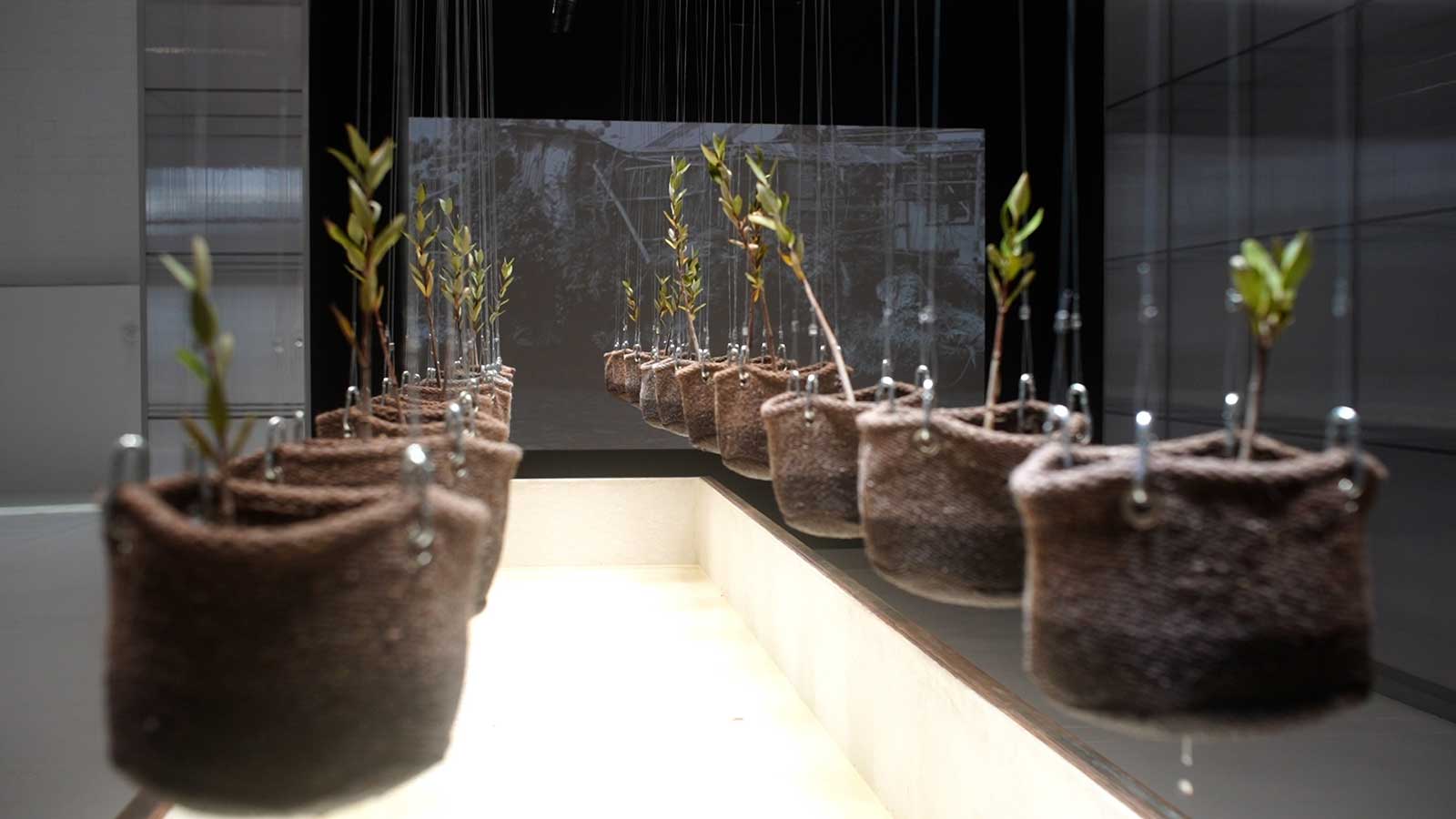
From the Philippines, Bantayan Island-based artist Martha Atienza recreated her 2019 installation Equation of State in the “Environments and Ecologies” exhibition hall. Twenty-four mangrove seedlings, sourced locally with help from the King Abdullah University of Science and Technology, are suspended above a trough made of found objects and filled with water from the Red Sea. A mechanism she describes as “island technology” — the Arduino programming board used in karaoke machines—systematically dips the plants in the water, reflecting the flow of tides. Films depicting the coastal community of Bantayan, its deterioration and resilience, are screened on the walls.
I’ve always been struck by the ease Atienza enters the traditionally male worlds of fishermen, compression divers, and seamen, often staying for long periods on international cargo ships, bearing witness to the hardships of seafaring life. Atienza met the fishermen of Thuwal, a coastal village along the Red Sea, who immediately saw the correlation between their amount of fish catch and the increase of mangroves in their area. “To make it happen with mangroves from Saudi, also the conversations connecting me to the world,” she says of the opportunity of bringing her work to Saudi, “we are all facing the same issues, so we should be connecting to each other.”
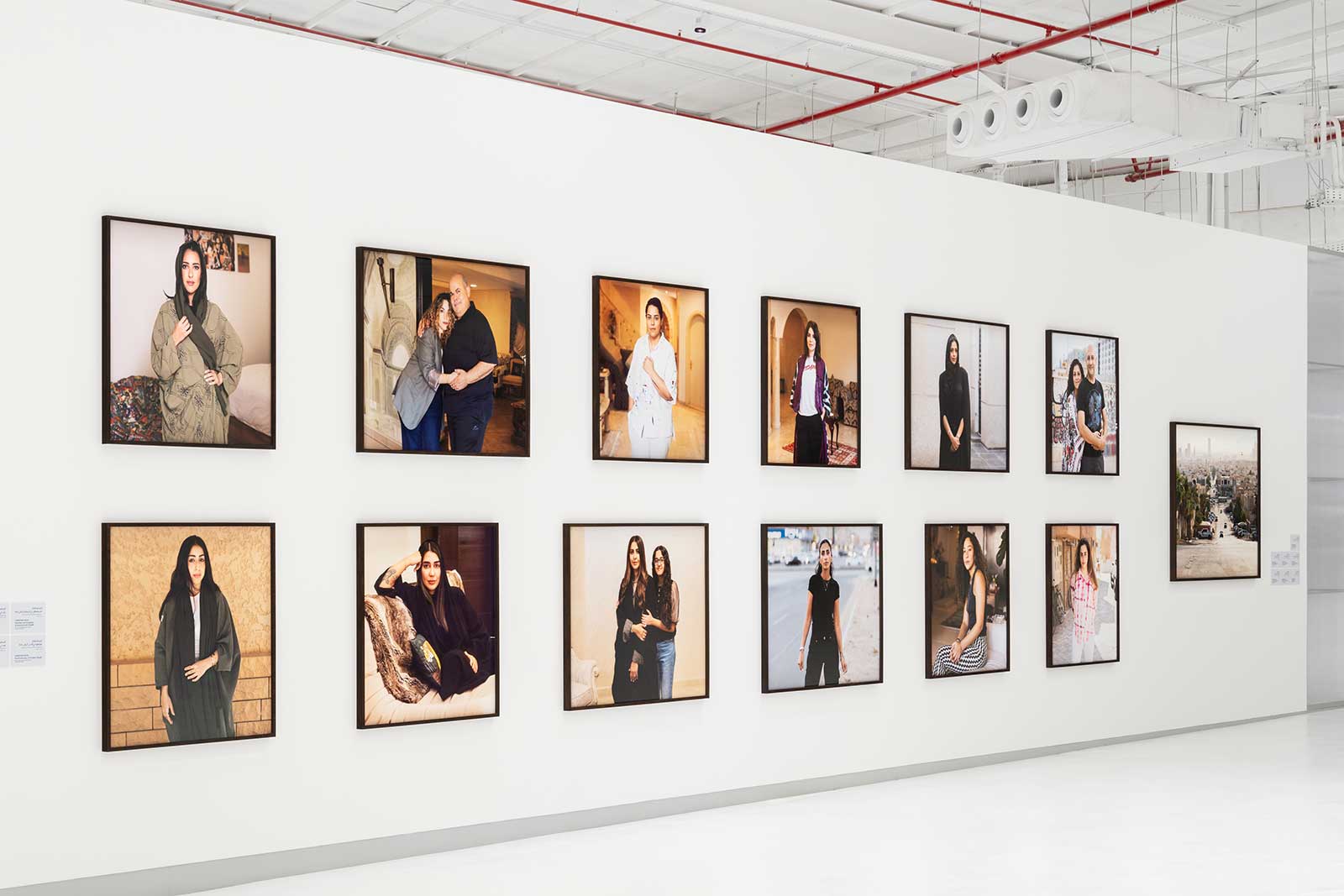
Nearby, a photographic portrait series titled Women of Riyadh tells the story of real people living through a major societal shift. Commissioned for the Diriyah Biennale, German photographer Christine Fenzl captured Saudi women between the ages of 35 and 40, all professionals and wearing contemporary attire, some robed in an abaya but each exuding a self-assertion that has never been on display before. For Fenzl, the project was a reflection on a new kind of visibility for the women. For Saudi Arabia, the women represent its future.
The Philippines makes another artistic contribution at the “Re/Search” exhibition area which showcases the methodological process of selected artists, offering viewers an in-depth look at how they approach art-making. Alexander Eriksson Furunes and Sudar Khadka, the architects behind Structures of Mutual Support, the Philippine Pavilion that received a Special Mention at the 2021 Venice Architecture Biennale, presents the documentation of their bayanihan-inspired communal building project, which they developed and constructed together with a Gawad Kalinga community in Bulacan.

The Biennale also pays tribute to the artists from Asia and the Gulf region who have paved the way for the current generation of artists. The exhibition hall titled “Modern Legacies and Geopoetics” features pioneering artists who have found a way to practice under stifling conditions, some whose work were only recently discovered and being shown for the first time. Palestine-born artist Samia Zaru’s large-scale textile work Life is a Woven Carpet (2001) was found by the curators all tangled up during a visit to the artist’s studio. The weighty piece, woven together like a net and strung with pieces of textile, glass beads, and fragments of clay used in Palestinian houses, is a curtain inviting viewers to come in and explore.
One of the more haunting works comes from Saudi Arabian artist Sara Abdu, whose piece Now That I’ve Lost You in My Dreams, Where Do We Meet? appears in the exhibition hall dedicated to “Knowledge in Material and Spiritual Intelligence.” Drawing on the power of aroma to evoke memory, sidr-and-camphor-scented soap bars are stacked in a round tower reminiscent of Levant soap factories, the artist’s ode to the Islamic ritual of washing the body of the deceased before burial. Each bar of soap is carved with a word from the title, a question that repeats itself in a circular, meditative pattern.
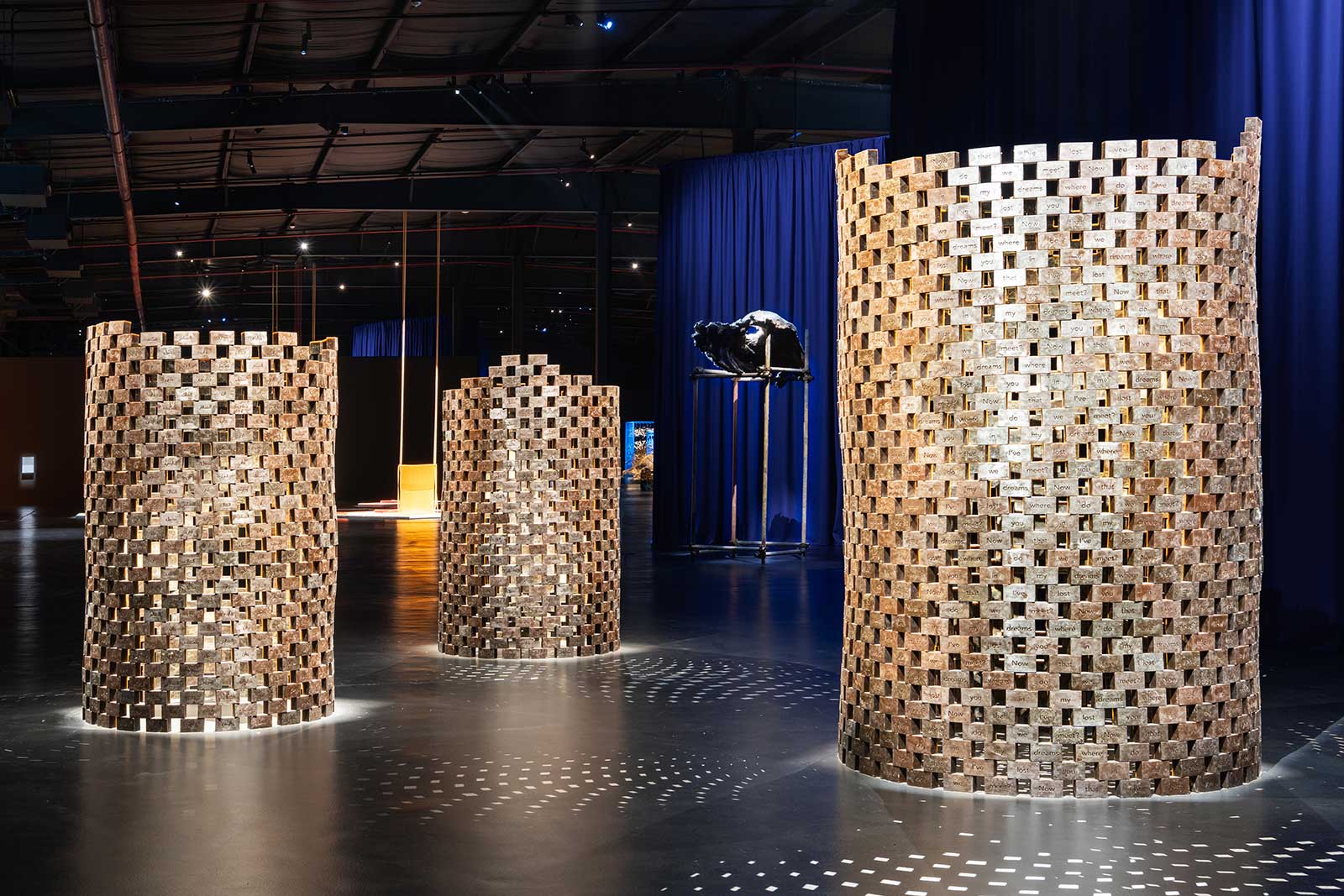
“It’s a beautiful question about where physicality actually is located in relation to memory,” says Anca Rujoiu, one of the Biennale’s co-curators. Al-Senussi shares that Abdu’s work touched the hearts of many, herself included: “This idea of loss has resonated with the audience in profound ways, and I can say personally that after having lost my beloved maternal grandmother just earlier this year, that spending time with Sara’s work helped to heal me and gave a response to my grief.”
Beyond the exhibition halls of the Biennale are even more rows of warehouses transformed into spaces for art. The Noor Riyadh Festival takes visitors through a tour of light-based art—shimmering, glowing, and pulsating works that speaks to human consciousness in a technologized society; the Saudi Arabia Museum of Contemporary Art (SAMoCA) whose stirring exhibition “Into The Night” explores the mystical realms of darkness; and several other galleries and open studios, all of which, like the Biennale itself, are completely free of charge.
Outside the JAX District, the City of Earth is being molded from the ground up. Diriyah is one of the Kingdom’s five “giga projects” fueled by a river of oil money, one that highlights Saudi heritage and tradition. The UNESCO heritage site At-Turaif, a restored 15th-century Najdi-style citadel made of mudbrick, stands as a monument to the history of the Saudi nation and architectural inspiration for the high-end commercial development surrounding it. The earthenness of this new-old city feels both humble and reverential: its camel-colored walls invite you to touch them with your hands, to feel the coolness of their surface against the hot sun, to smell the sweetness of grass baked into clay, and to hear the whispers that have long ago been incanted in these sandstone valleys, ancient prayers for rain.
